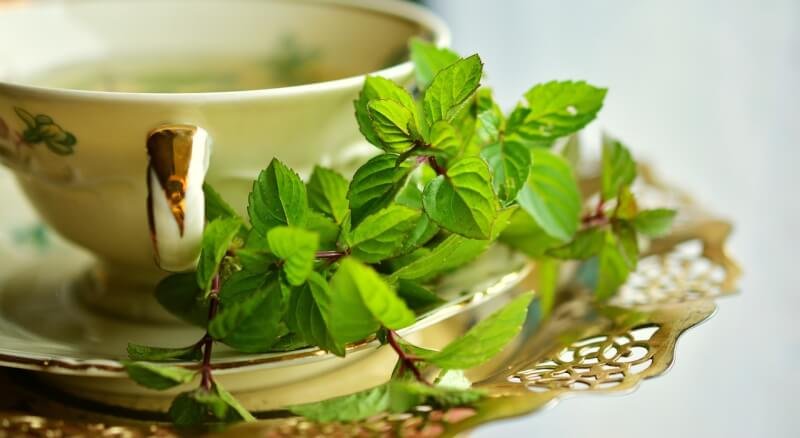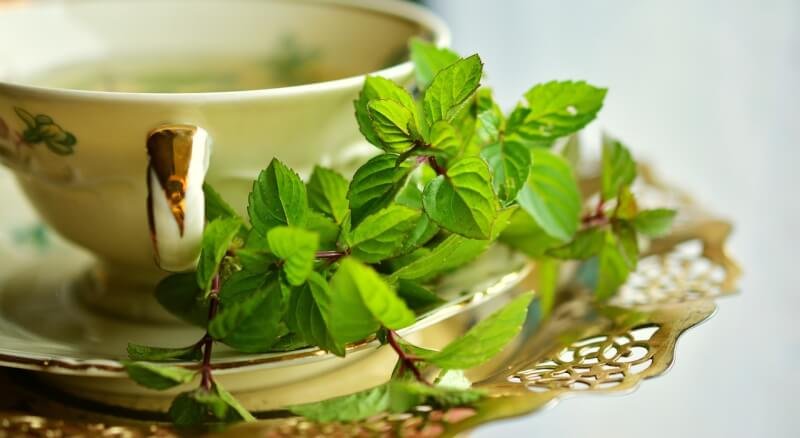If you’re looking to elevate your tea-drinking experience, you might be wondering what the best herbal and botanical ingredients are for specialty tea blends. With a wide variety of options available, it can be overwhelming to know where to start. Luckily, we’ve got you covered. In this article, we will explore some of the top herbal and botanical ingredients that can take your tea to the next level. From soothing chamomile to invigorating mint, get ready to discover a world of tantalizing flavors and aromatic blends that will make your tea time truly exceptional. So grab your favorite mug and prepare to embark on a journey through the world of specialty tea blends.

Tea as a Beverage
When it comes to beverages, tea has been enjoyed for centuries and comes with a rich historical significance. From its origins in ancient China to its widespread popularity today, tea has made its mark on cultures around the world. Not only is it a comforting and refreshing drink, but it also boasts many health benefits that make it a go-to choice for many tea enthusiasts.
Historical Significance of Tea
Tea has a long and fascinating history that dates back over 5,000 years. Legend has it that tea was discovered in ancient China when Emperor Shen Nong, known as the “Divine Farmer,” was boiling water and a tea leaf accidentally fell into his pot. Intrigued by the pleasant aroma and taste of the infused water, he declared it a divine gift and the birth of tea.
Tea quickly gained popularity in China and eventually spread to other parts of Asia. It became an integral part of social, cultural, and even religious ceremonies. Traders eventually introduced tea to Europe during the 16th century, leading to its worldwide recognition and consumption.
Types of Tea
Tea comes in various types, each with its own unique characteristics and flavors. Here are some of the most popular types of tea:
Green Tea: Known for its vibrant green color and fresh taste, green tea is unfermented and is packed with antioxidants that offer numerous health benefits.
Black Tea: Black tea undergoes a full fermentation process, resulting in its robust flavor and dark color. It is widely consumed and often enjoyed with milk or other additions.
Oolong Tea: Oolong tea is partially fermented, giving it a taste that falls between green and black tea. It offers a delicate and aromatic flavor profile.
White Tea: Considered the least processed of all teas, white tea is made from young tea leaves and buds. It possesses a mild and subtly sweet taste.
Herbal Tea: Unlike traditional tea, herbal tea is not made from the Camellia sinensis plant. Instead, it consists of various herbs, flowers, fruits, and spices, offering a wide range of flavors and health benefits.
Benefits of Herbal and Botanical Ingredients in Tea Blends
Beyond the traditional tea options, herbal and botanical ingredients have become increasingly popular for their diverse health benefits and unique flavors. Here are several key advantages of incorporating these ingredients into tea blends:
Promotes Relaxation and Reduces Stress
Certain herbs, such as chamomile and lavender, have natural calming properties, making them valuable additions to tea blends for promoting relaxation and reducing stress. By enjoying a cup of tea infused with these ingredients, you can create a soothing and comforting ritual to unwind after a long day.
Boosts Immune System
Many herbal ingredients contain powerful antioxidants and compounds that provide support to the immune system. For instance, echinacea is known for its immune-boosting properties, helping to defend the body against common illnesses and infections. By including such ingredients in tea blends, you can give your immune system a natural boost.
Improves Digestion
Certain herbs, like ginger and peppermint, have long been recognized for their beneficial effects on digestion. They can help alleviate symptoms such as indigestion, bloating, and nausea. When combined in tea blends, these ingredients can contribute to a healthier digestive system and promote overall well-being.
Supports Weight Loss
Many individuals turn to tea blends for weight management, as certain herbs can aid in boosting metabolism and suppressing appetite. Herbal ingredients such as nettle and hibiscus have been associated with weight loss benefits, making them popular additions to tea blends for those looking to shed some pounds.
Enhances Mental Clarity and Focus
When it comes to mental clarity and focus, certain herbs like rosehip and lemongrass can provide valuable support. These ingredients are known for their ability to enhance cognitive function and improve concentration. By incorporating them into tea blends, you can enjoy a soothing and invigorating beverage that boosts mental performance.
Soothes Sore Throat
When you’re feeling under the weather, tea blends with soothing ingredients like licorice root can provide relief for a sore throat. Licorice root has long been used for its soothing properties, helping to alleviate discomfort and promote throat health. By opting for tea blends that include this ingredient, you can enjoy both the comforting warmth of tea and its therapeutic benefits.

Popular Herbal and Botanical Ingredients for Tea Blends
Now that we’ve explored the numerous benefits of using herbal and botanical ingredients in tea blends, let’s take a closer look at some of the most popular ingredients used today:
Peppermint
Peppermint is a versatile herb known for its refreshing and minty taste. It offers numerous health benefits, including soothing digestive issues, relieving headaches, and improving overall mental clarity. Peppermint is often used in tea blends for its invigorating flavor and its ability to promote relaxation.
Chamomile
Chamomile is a beloved herb known for its calming properties. It has been used for centuries to promote relaxation, reduce anxiety, and aid in sleep. Chamomile imparts a soothing and floral flavor to tea blends, making it a popular choice for those seeking a peaceful and gentle beverage.
Lavender
Lavender is widely recognized for its delightful scent, but it also offers several health benefits. It is known for its calming effects, making it an excellent addition to tea blends for relaxation and stress relief. Lavender adds a subtle floral note to tea, creating a truly aromatic and calming beverage.
Ginger
Ginger is a warming and stimulating herb that adds a spicy kick to tea blends. It has been used for centuries to aid digestion, relieve nausea, and reduce inflammation. Ginger can be combined with various ingredients to create flavorful and invigorating tea blends.
Hibiscus
Hibiscus flowers provide a vibrant red hue and a tangy flavor to tea blends. They are packed with antioxidants and have been associated with various health benefits, including reducing high blood pressure and boosting liver health. Hibiscus adds a unique tartness to tea blends, making it a refreshing choice.
Lemongrass
Lemongrass is a citrusy herb that offers a bright and refreshing flavor to tea blends. It is known for its detoxifying properties and its ability to relieve anxiety and promote healthy digestion. Lemongrass provides a fresh and zesty element to tea blends.
Rosehip
Rosehip is the fruit of the wild rose plant and is highly valued for its high vitamin C content. It offers a slightly tart and fruity taste to tea blends. Rosehip is often included in tea blends for its potential immune-boosting properties and its contribution to overall well-being.
Nettle
Nettle is a herbaceous plant that is commonly used in herbal tea blends for its potential anti-inflammatory and diuretic properties. It has a mild and earthy flavor that pairs well with other ingredients. Nettle tea blends are often enjoyed for their potential detoxifying effects and their support for the urinary system.
Echinacea
Echinacea is known for its immune-boosting properties, making it a valuable ingredient in tea blends during cold and flu season. It imparts a slightly bitter taste to tea, which is often balanced with other ingredients. By incorporating echinacea into tea blends, you can enjoy a beverage that supports your immune system and overall health.
Licorice Root
Licorice root is a popular ingredient in tea blends due to its natural sweetness and its potential health benefits. It has been used for centuries to soothe the throat, relieve coughs, and support gastrointestinal health. Licorice root adds a touch of natural sweetness to tea blends and provides a comforting and pleasant flavor.
Peppermint
Health Benefits of Peppermint
Peppermint offers a variety of health benefits. It has been commonly used to alleviate digestive issues such as indigestion, bloating, and stomach cramps. Peppermint has natural analgesic properties, making it useful for relieving headaches and muscle aches. It is also known to improve mental clarity and promote a sense of alertness.
Flavor Profile
Peppermint has a strong and refreshing minty flavor. It provides a cooling sensation and a delightful aroma. The distinct flavor of peppermint makes it a perfect choice for those who enjoy a refreshing and invigorating taste in their tea.
How to Use in Tea Blends
To incorporate peppermint into tea blends, you can either use dried peppermint leaves or crushed peppermint leaf tea bags. Steep a teaspoon of dried peppermint leaves or one tea bag in a cup of hot water for five to seven minutes. You can enjoy peppermint tea on its own or combine it with other herbs and botanicals to create a personalized flavor profile.

Chamomile
Health Benefits of Chamomile
Chamomile has long been recognized for its calming and soothing properties. It is often used to promote relaxation, reduce anxiety, and aid in sleep. Chamomile also offers potential benefits for digestion, helping to ease stomach discomfort and indigestion. It is a gentle herb that can be enjoyed by individuals of all ages.
Flavor Profile
Chamomile tea has a subtle and floral flavor with a hint of apple-like sweetness. It is often described as having a mild, soothing, and slightly earthy taste. The delicate flavor of chamomile makes it a versatile herb that can be enjoyed on its own or blended with other ingredients.
How to Use in Tea Blends
To make chamomile tea, steep a tablespoon of dried chamomile flowers in a cup of hot water for five to seven minutes. You can adjust the steeping time according to your preferred strength. Chamomile tea blends well with other herbs, botanicals, or even black or green tea for added flavor complexity.
Lavender
Health Benefits of Lavender
Lavender is widely recognized for its relaxing and stress-relieving qualities. The aroma of lavender has been shown to promote feelings of calmness and improve sleep quality. It also possesses potential anti-inflammatory properties and may help alleviate headaches and muscle tension. Lavender can be a beneficial addition to your tea blend for both its soothing effects and potential health benefits.
Flavor Profile
Lavender imparts a delicate floral flavor to tea, resembling the aroma of fresh lavender flowers. It offers a subtle sweetness and a hint of herbal freshness. The gentle flavor profile of lavender makes it an ideal ingredient for tea blends that aim to promote relaxation and tranquility.
How to Use in Tea Blends
To incorporate lavender into tea blends, use dried lavender buds or petals. Steep a teaspoon of dried lavender buds in a cup of hot water for five to seven minutes. You can enjoy lavender tea on its own or combine it with other herbs and botanicals for a more complex and aromatic blend.
Ginger
Health Benefits of Ginger
Ginger is well-known for its potential benefits to the digestive system. It can help alleviate nausea, reduce inflammation, and aid digestion. Ginger has also been shown to have antioxidant and anti-inflammatory properties, contributing to overall wellness. Adding ginger to your tea blend can provide a zesty kick and potential health benefits.
Flavor Profile
Ginger has a distinctively spicy and slightly tangy flavor. It offers a warming sensation and a refreshing aroma. The bold flavor of ginger adds depth and character to tea blends, making it a popular choice for those who enjoy lively and invigorating tastes.
How to Use in Tea Blends
To use ginger in tea blends, you can either use fresh ginger root or dried ginger slices. Steep a teaspoon of grated fresh ginger or a few dried ginger slices in a cup of hot water for five to seven minutes. Adjust the amount of ginger according to your desired taste preference. Ginger blends well with other herbs and botanicals, allowing you to create unique and flavorful tea combinations.
Hibiscus
Health Benefits of Hibiscus
Hibiscus is a vibrant flower that carries potential health benefits. It is rich in antioxidants and vitamin C, offering immune-boosting properties. Hibiscus has also been associated with lowering blood pressure and improving heart health. Including hibiscus in your tea blend can provide a tangy flavor profile and potential wellness benefits.
Flavor Profile
Hibiscus tea has a tangy and slightly tart flavor. It offers a pleasant sweetness that is balanced by its natural acidity. The vibrant color and refreshing taste of hibiscus make it an excellent choice for those who enjoy a zesty and invigorating tea experience.
How to Use in Tea Blends
To make hibiscus tea, steep a teaspoon of dried hibiscus petals in a cup of hot water for five to seven minutes. You can adjust the steeping time and the amount of petals according to your taste preference. Hibiscus blends well with other herbs and botanicals, creating tea blends that are both visually appealing and flavorful.
Lemongrass
Health Benefits of Lemongrass
Lemongrass is a citrusy herb that offers potential health benefits. It has been used to alleviate anxiety, improve digestion, and relieve muscle pain. Lemongrass is also known for its potential antibacterial and antifungal properties. By incorporating lemongrass into your tea blend, you can enjoy its refreshing taste and potential therapeutic effects.
Flavor Profile
Lemongrass imparts a bright and lemony flavor to tea. It offers a fragrant and zesty note that adds a refreshing element to any blend. The invigorating taste of lemongrass makes it a popular choice for those seeking a tea that is both revitalizing and calming.
How to Use in Tea Blends
To use lemongrass in tea blends, use fresh or dried lemongrass stalks. Steep a teaspoon of chopped fresh lemongrass or a few stalks of dried lemongrass in a cup of hot water for five to seven minutes. Adjust the amount of lemongrass according to your preferred taste intensity. Lemongrass pairs well with other herbs and botanicals, allowing you to create a customized tea blend.
Licorice Root
Health Benefits of Licorice Root
Licorice root has a long history of use as a herbal remedy. It is known for its potential anti-inflammatory and immune-boosting properties. Licorice root has been used to soothe the throat, relieve coughs, and support gastrointestinal health. Adding licorice root to your tea blend can provide natural sweetness and potential health benefits.
Flavor Profile
Licorice root has a distinctively sweet and woody flavor, resembling the taste of licorice candies. It lends a naturally sweet note to tea blends, eliminating the need for additional sweeteners. The unique flavor profile of licorice root makes it an excellent choice for those who enjoy a touch of sweetness in their tea without the use of sugar.
How to Use in Tea Blends
To incorporate licorice root into tea blends, use dried licorice root slices or whole pieces. Steep a teaspoon of dried licorice root in a cup of hot water for five to seven minutes. You can adjust the steeping time or the amount of licorice root according to your desired taste. Licorice root pairs well with various herbs and botanicals, allowing you to create a well-rounded and flavorful tea blend.
In conclusion, herbal and botanical ingredients are an excellent addition to tea blends, providing a wide range of health benefits and unique flavors. Whether you’re seeking a soothing cup to relax and unwind or hoping to harness the potential wellness benefits of these ingredients, there are numerous options for your tea explorations. From the invigorating kick of peppermint to the tranquil aroma of lavender, the world of herbal and botanical teas offers something for everyone. So why not dive into the realm of specialty tea blends and discover the delightful and beneficial combinations that await you?


